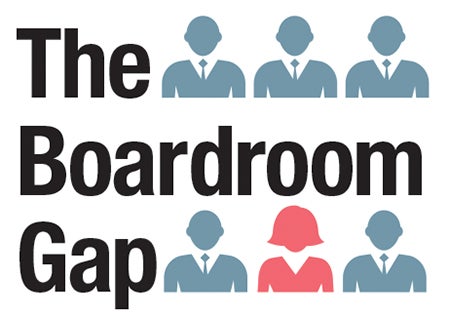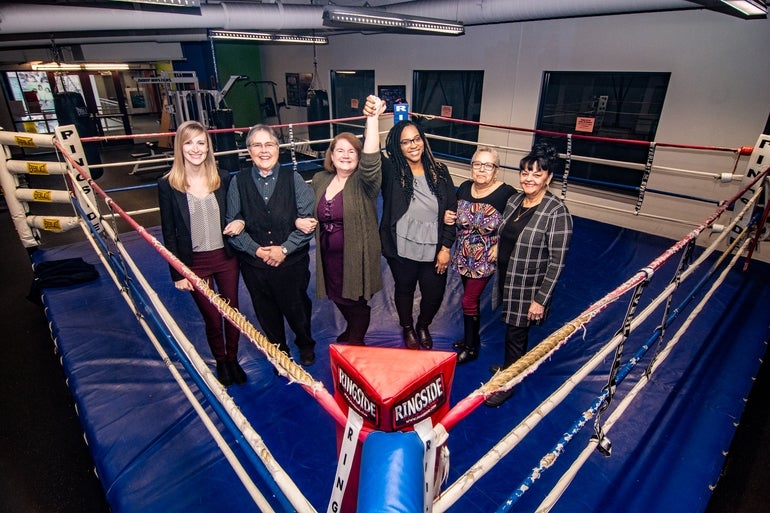A 2019 WBJ investigation into the gender breakdown of the leadership at 75 Central Massachusetts prominent business organizations found 35% were women, an increase from 33% in 2018. This year, the percentage went backward.
Get Instant Access to This Article
Subscribe to Worcester Business Journal and get immediate access to all of our subscriber-only content and much more.
- Critical Central Massachusetts business news updated daily.
- Immediate access to all subscriber-only content on our website.
- Bi-weekly print or digital editions of our award-winning publication.
- Special bonus issues like the WBJ Book of Lists.
- Exclusive ticket prize draws for our in-person events.
Click here to purchase a paywall bypass link for this article.
Progress comes slow with gender diversity among business leadership. Sometimes it doesn’t come at all.
In 2019, a Worcester Business Journal investigation into the gender breakdown of the leadership at 75 Central Massachusetts prominent business organizations found a low but not unusual number: 35% of executives and board members were women, which was an increase from 33% in 2018 when WBJ first performed the investigation.

This year? 34% are women, a slight step backward.
For the third year, WBJ has reviewed nearly 1,600 professionals in positions of power at Central Massachusetts public and private companies, colleges, hospitals, financial institutions and social service nonprofits. The results are on par with state and national figures, but not where advocates say such organizations should be for better diversity.
[RELATED: Mass. legislators eye laws requiring women on public company boards]
“We’ve been very patient, and women and people of color are not willing to wait any longer,” said Andrea Silbert, the president of the Eos Foundation, a Massachusetts equality group.
Women are far more likely to be in positions of power in nonprofits such as at a Boys & Girls Club or a United Way, or in higher education. In fact, four of Central Massachusetts’ 15 colleges are female-led: Anna Maria College, Becker College, Nichols College and Worcester Polytechnic Institute.
The region’s healthcare industry mirrors the overall trend, as top organizations are 34% women in their leadership ranks, with some hospitals outperforming. Milford Regional Medical Center, for example, has women in half of its 10 leadership roles.
The Milford hospital has prioritized having a diverse team bringing different viewpoints, but it hasn’t been at the expense of having the best person in the job, said Edward Kelly, Milford Regional’s president and CEO for more than five years.
“For us, it’s always really about hiring the right person. It just works out that right now our leadership team is 50-50,” Kelly said. “It’s a tough business, so having a qualified person is really important.”

But to find a woman in such a spot at a public company traded on the likes of the New York Stock Exchange or Nasdaq is very unlikely, in Central Massachusetts and beyond. One out of five executives and board members at the region’s 16 public companies is a woman.
Insulet, a medical equipment maker in Acton, isn’t just the only female-led public company in Central Massachusetts, its Shacey Petrovic is the only female CEO among the top 25 largest public companies in the state, a fact highlighted in a February report by the nonprofit Eos Foundation.
Seeing good and bad
This year’s report, like others, finds both bright spots and discouraging numbers.
First, the bad news: In addition to Insulet being the one of 16 public Central Massachusetts companies led by a female executive, two – SeaChange International and Psychemedics, both of Acton – have no female board members or top executives.
Among all 75 institutions analyzed, seven had no female board members. And 31 had women in fewer than one out of four executive or board seats.
But there are some places where women are combining to lead organizations, and other indications of progress.
The Boys & Girls Club of Worcester, for example, has women in all top leadership roles. Executive Director Liz Hamilton appointed them.
“Throughout my life, I have had mentors who provided opportunities for me to lead,” Hamilton said. “As the leader of my organization, I work to create a culture that encourages, challenges and supports my team to reach their full potential.
“As a woman, I believe I have the responsibility to mentor and support the incredible upcoming and current women leaders I am fortunate to work or be associated with,” Hamilton said.
Hologic, a publicly traded medical device manufacturer in Marlborough, has three women on its board and among its executive ranks. CEO Stephen MacMillan highlighted what he called a stark difference at the firm’s headquarters from when he started in 2013.
Back then, he said in a public letter in January, every member of the senior management team he inherited was a white man.
Since then, women have been appointed to the roles of CFO, senior vice president of human resources, chief information officer and chief of staff. Hologic’s finance team has not typically been a stronghold for women, MacMillan said, but today they make up nearly half of its leadership team.
Hologic doesn’t set diversity targets or quotas, he said, and uses customized assessment tools to eliminate bias in hiring.
“These tools are blind to gender and race, which enables us to focus on the potential for performance,” he wrote in the January letter. “And it’s performance that drives compensation, which our analysis has shown is equitable between men and women.”
The number of so-called zero-zero firms – those with no female executives or board members – has fallen from six noted in the original Boardroom Gap report in 2018 to two this year.
One former zero-zero, the Southborough information technology firm Virtusa, has a female director in Deborah Hopkins, the founder and CEO of Citi Ventures in New York and Citi's first chief innovation officer.
Few of the area’s largest and most high-profile institutions are led by women – nine of the 75 this year, down from 12 in 2019.

A few employers changed from male-led to female-led or vice versa.
Saint Vincent Hospital, previously led by CEO Jeffrey Welch, is now headed by Carolyn Jackson. Cummings School of Veterinary Medicine at Tufts University in Grafton is now male-led, with Alastair Cribb succeeding Joyce Knoll. The YMCA of Central Massachusetts in Worcester is now led by David Connell, who replaced Kathryn Hunter in 2019.
Progress locally and beyond
Women are just as outnumbered in positions of power at public companies across Massachusetts and the largest firms nationally.
In each case of those three geographic measurements, women make up about 6% of CEOs, and in the low- to mid-20s in share of board seats. S&P 500 companies, a group including the country’s largest public firms, have women in 27% of their executive positions, a rate outpacing both the Central Massachusetts and Massachusetts figures in total.
Statewide, there are signs of progress.
The number of zero-zero firms among the 100 largest public companies – once 35 of 100 in 2003 – is down to just one.
Among those who have women in at least 30% of their board seats are six Central Massachusetts firms: Boston Scientific, Hanover Insurance Group, Hologic, Insulet, TJX Cos. and Waters Corp.
Jean Beaupre, a marketing and communications professor at Nichols College in Dudley, sees data as generally leveling off. Unconscious bias is still too often an issue, she said, keeping women closed off from jobs when those making decisions on hiring envision only a man for a certain role.
“Stereotypes are slow to change,” said Beaupre, Nichols' faculty advisor to the school's Institute for Women's Leadership. “You're seeing that come about now.”
Still, it remains easy enough for companies of any size to put in place family-friendly policies, tweak vocabulary in job descriptions, or even strip gender identifiers from applications.
“I don't see any reason why even a small business can't set a goal to have more diversity in their workforce and put measures in place to make that happen,” Beaupre said.

Catalyst, a New York nonprofit advocating for women in business, has seen similar slow progress nationally.
Among S&P 500 companies, women were found by Catalyst to make up smaller and smaller shares of staffing as a worker climbs the corporate ladder. Women comprise 37% of mid-level managers but 21% of board seats and 6% of CEOs.
The rate of those shrinking numbers has barely changed with time, said Serena Fong, Catalyst’s vice president for strategic engagement.
“It’s too slow for what we’d like to see,” Fong said. “The pace has been glacial, unfortunately.”
One trend has been encouraging, Fong said: More recognition for why there should be more diversity. That’s seen as a sign more leaders are giving up on old notions about leaders having to look a certain way or have a particular background.
“I like to flip it around,” she said, “and say, ‘Give me the case for keeping it the same, for keeping it old, white and male.’”

